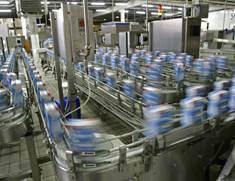Capital expenditures can be a big hit to the bottom line, especially when they are unexpected.

A lease or a loan is often needed so you don’t have to drain the savings account, and finding the best interest rates is difficult if you’re in a hurry.
To avoid scrambling when an emergency arises and you need that equipment or repair right away, create a capital improvement plan to help you prepare for the inevitable unexpected capital expenditure.
Capital improvement plans have long been the province of cities and schools, with expected outlays laid out in advance for taxpayers. Businesses can adapt a similar format in preparing plans tailored to their specific needs.
For the purposes of the plan, the IRS defines a capital expense as acquired property or improvements lasting longer than one year. The components of a capital improvement plan are as follows:
Project Detail – Project information and timing are the heart of the capital improvement plan. Looking at your list of assets, which do you foresee will need investment or replacement?
If you own a building, capital expenditures might include a roof, HVAC systems, plumbing, building envelope, parking lot and grounds. New floors, windows or doors can be included, as are major internal improvements or reconfigurations. Equipment and vehicles have what is called a “useful life” that varies. Depending on wear and tear in the course of your business activities, you might replace a vehicle every year or every five years. A piece of equipment might also wear out faster if more hours are put on it than average.
The first step is to create a spreadsheet with your planned asset purchases and improvements listed. Then project out five, 10 or 20 years to calculate when you are most likely to incur costs. For example, that 20-year roof you put on last year will expire in 19 years.
Of course, costs will most likely be higher in the future so include an inflation percentage to ensure you budget high enough. Adding up totals for each year will give you a snapshot of capital expenditures annually. Include estimated salvage or trade-in values for vehicles and equipment in your calculations since these reduce capital outlay.
Depending on the size of your operation, you may need to ask managers to prepare capital need forecasts for their departments or branches. These can be compiled into a master companywide plan.
Project Financing – Once projects are identified, the next step is to create a budget and financing plan. The ideal situation is to allocate a share of profits annually to a reserve fund so expenses can be handled as they arise.
Even if outside financing is always used, saving a certain amount for expected down payments is better than pulling money out of operating cash. It’s much less painful to save $5,000 a year toward a roof than to come up with $100,000 all at once or remortgage your building. The funds in your reserve fund can be invested so you earn interest as they accumulate.
By putting capital expenditures on the radar in your overall budgeting and financial management, you can make sure that profit goals are adequate. Since depreciation is a non-cash expense, the necessary outlay for those aging assets often isn’t considered as a potential cost. Setting up a reserve fund treats those costs as actual and prevents the situation of being strapped when an emergency arises.
If you purchase capital equipment or vehicles annually, then setting up a pre-approved equipment line of credit can be useful.
After the bank reviews and approves your financial performance, you will be set up to borrow up to a certain amount. You are usually not charged anything until you draw down funds.
Borrowed amounts are then converted to loans with a term appropriate to the equipment you purchased, for example, five or seven years. This type of line of credit is reviewed annually to ensure that you are making payments on time and that the credit line is the right size for your needs.
If you plan to borrow for capital improvements, then forecasting the cost of funds is a necessary component of your financial projections. Many companies prepare three- to five-year projections. Without a capital improvement plan, you won’t be able to include this key information.
Loans impact both your income statement (interest expense) and your balance sheet (debt ratio). Payments also impact cash flow.
Be prepared for the inevitable by preparing a thorough and well-thought-out capital improvement plan.
Contact 415 Group today to discuss our business consulting services in the Northeast Ohio area.



